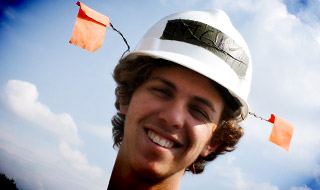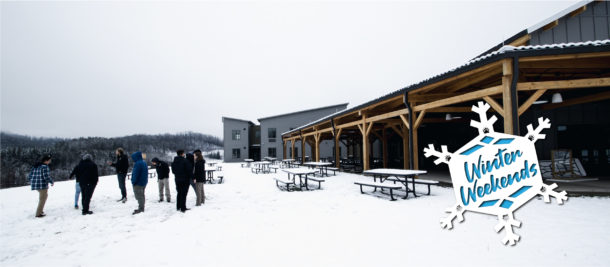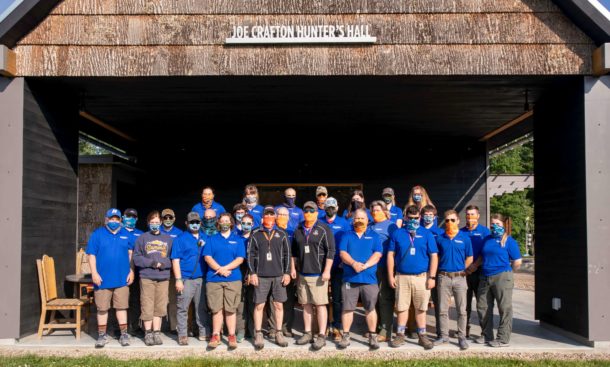
You’ve heard about SummitCorps. You’ve heard about the miles of hiking and biking trails constructed by the Order of the Arrow.
But what was happening weeks before the Scouts even arrived?
Well, there was plenty of topographic map analysis, grade shooting and flagging. We talked to Chris Bloxton, trail supervisor for the National Park Service, for some more information (and a little bit of translation).
How was Bloxton involved with the project? Well, he was in charge of placing 44 miles of flags to guide the Scouts during SummitCorps.
Yep, that’s a lot of flags.
Before The Trails
Before Bloxton and his crew placed any flags, they had plenty of research and planning to do. Here’s what it took to plan the trails under construction at SummitCorps.
- Studying Topographic Maps. When building trails that follow the natural curves of the landscape, also known as contour trails, it is especially important to assess the physical profile of the mountains. It helps ensure the trails are sustainable and prevents erosion and washouts.
- Interpretive Analysis. Bloxton then visited the sites where the trails were to be cleared and looked for endangered plant species and archaeological sites that would call for changes in the planned route. Fortunately, Bloxton was given 50 feet of space on either side of the proposed trail to make necessary changes.
- Shooting The Grade. After the paths were finalized, Bloxton and his crew surveyed the land to measure the slope along the proposed trail line. They found out that the average grade of the trails is 7 percent with a few portions reaching up to 13 percent.
[pullquote]“There are a lot of different diagnoses for different trail problems.” — Chris Bloxton, NPS trail supervisor[/pullquote]
Along the way, Bloxton and his crew ran into plenty of challenges, but took them in stride. Knowing how to overcome obstacles is all part of the job.
“There are a lot of different diagnoses for different trail problems,” said Bloxton.
A trail “diagnosis” could include anything from building steps to adding rock armor or completely moving a segment of trail. For example, Bloxton encountered plenty of plant species that must not be damaged or disturbed by a trail, according to regulations. In these situations, he had the choice to either build around the plant or have the plant relocated.
So. Much. Flagging.
What does the process of flagging trails entail? It’s a 2-part operation.
- Corridor Flagging. During this process, the crew flags a standard width of trail on either side of the expected route. The projected trail formed by this process shows how far brush must be cleared on either side of the route, creating a trail corridor.
- Pin Flagging. This is where things get technical. Here the crew marks the exact dimensions of the treadway (where you’ll actually be walking or riding) inside the corridor. This creates a trail within the larger path, you could say.
After all was said and done, Bloxton and his crew planted a whopping 50,000 flags over 44 miles of trail.
Could You Walk 1 Mile In Chris’s Shoes? How About 120?
So who is the man behind the flags?
Chris Bloxton has worked as a trail supervisor for the National Park Service for over 2 years after spending 9 years in the Army. Even though he is relatively new to the organization, Bloxton says he’s always admired the NPS.
“I’ve always wanted to work for the Park Service,” said Bloxton.
And work he has. Since the beginning of the flagging process in the New River Gorge, Bloxton says he has walked a total of 120 miles on the trail system.
Seem like a lot? That doesn’t include the pre-flagging work or the time he’s spent on the trails since, but Bloxton isn’t complaining.
“These trails have been my favorite project,” said Bloxton.
Bloxton has continued to work on the project by providing supervision and answering any technical questions. Over the next few weeks, you can continue to find him alongside the Scouts following 44 miles of flags that he and his crew placed.
What’s the longest distance you’ve ever hiked?



